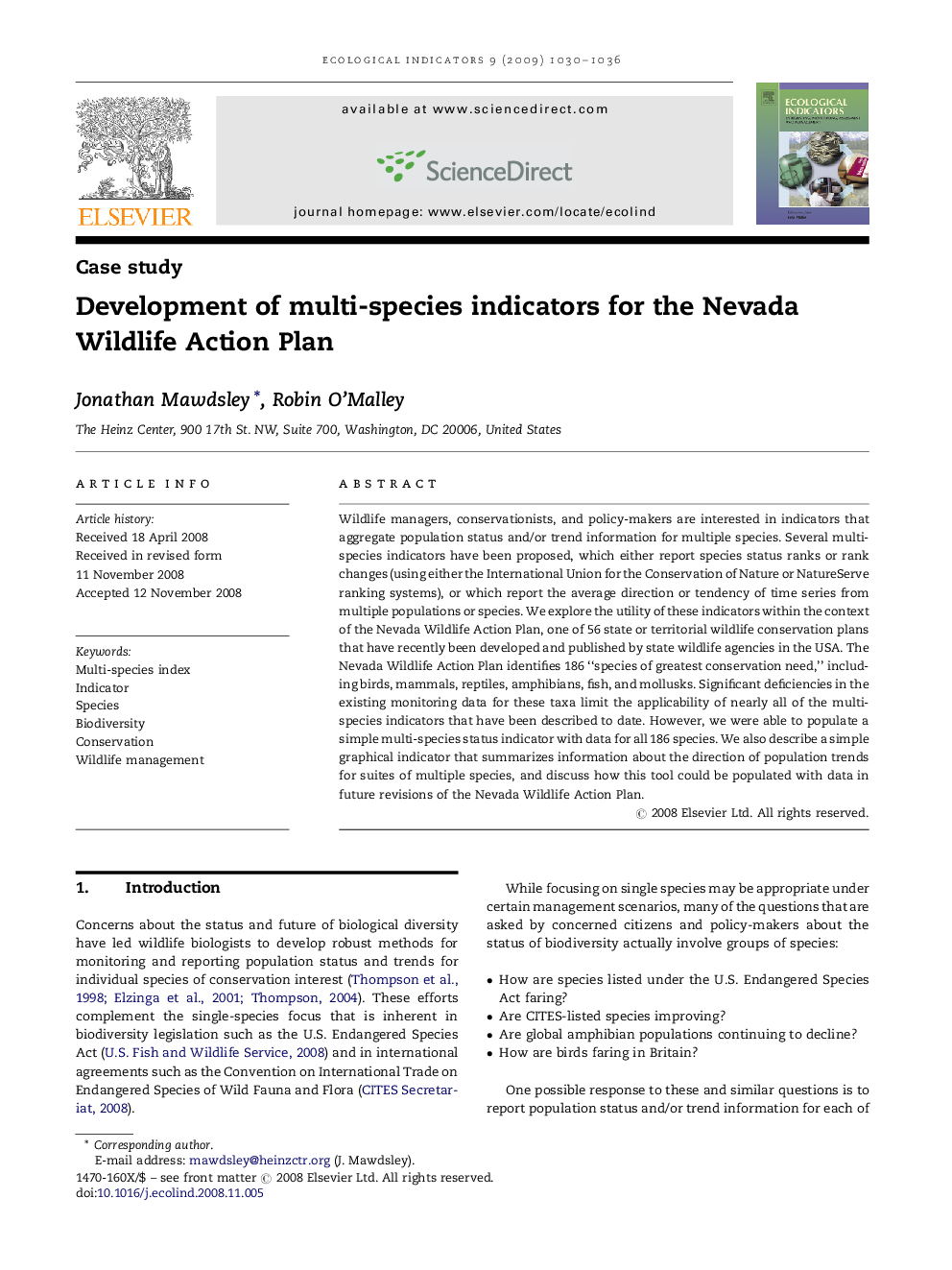| Article ID | Journal | Published Year | Pages | File Type |
|---|---|---|---|---|
| 4374527 | Ecological Indicators | 2009 | 7 Pages |
Abstract
Wildlife managers, conservationists, and policy-makers are interested in indicators that aggregate population status and/or trend information for multiple species. Several multi-species indicators have been proposed, which either report species status ranks or rank changes (using either the International Union for the Conservation of Nature or NatureServe ranking systems), or which report the average direction or tendency of time series from multiple populations or species. We explore the utility of these indicators within the context of the Nevada Wildlife Action Plan, one of 56 state or territorial wildlife conservation plans that have recently been developed and published by state wildlife agencies in the USA. The Nevada Wildlife Action Plan identifies 186 “species of greatest conservation need,” including birds, mammals, reptiles, amphibians, fish, and mollusks. Significant deficiencies in the existing monitoring data for these taxa limit the applicability of nearly all of the multi-species indicators that have been described to date. However, we were able to populate a simple multi-species status indicator with data for all 186 species. We also describe a simple graphical indicator that summarizes information about the direction of population trends for suites of multiple species, and discuss how this tool could be populated with data in future revisions of the Nevada Wildlife Action Plan.
Related Topics
Life Sciences
Agricultural and Biological Sciences
Ecology, Evolution, Behavior and Systematics
Authors
Jonathan Mawdsley, Robin O'Malley,
